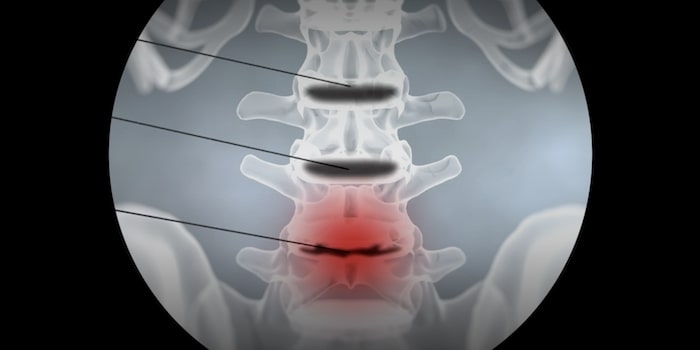
Advanced Diagnostic Testing to Examine Spinal Discs
A discogram is a type of diagnostic test that can examine intervertebral spinal discs. It works by injecting a special dye into the injured disc and viewing it using an x-ray. The dye can help locate the injured disc and evaluate an appropriate treatment plan for relieving pain. The interventional pain management specialist uses discograms to help diagnose what may be causing significant back pain. It can evaluate if a disc has developed a tear or has ruptured and is causing pain, and allows for a deeper view of the disc than a standard MRI test.
What are the Benefits of a Discogram?
Severe pain can seriously impact a person’s quality of life, making it hard to work, sleep, or perform everyday activities. A discogram may provide a more accurate diagnosis of the source of the issue than other imaging tests. It can also help the physician determine if a particular spinal disc is the cause of your pain and plan the most effective treatment moving forward. Our team is proud to offer state-of-the-art tools and technologies to patients in the area. Whether you are coming in for a discogram or another procedure, you can be confident that you are receiving the highest quality of care.
Ideal Candidates for Discograms
Discograms can determine if an individual’s back pain may be caused by an injured or deteriorating disc. It can also be used to evaluate the need for surgery to correct the disc/discs. As it is an invasive procedure, a discogram may only be performed after more conservative methods have been tried to remedy the pain. An MRI or CT scan may also be suggested before a discogram.
An injured or degenerative disc can cause severe back pain, but the diagnosis may not always be easy to determine. With discogram diagnostic testing, the physician can discover the origin of your back pain and evaluate an effective treatment plan.
What Does the Procedure Involve?
A discogram is an outpatient procedure performed with the patient under a sedative and local anesthetic. The physician will begin by inserting the needle into the disc that is being inspected. He will then inject the dye, which will stimulate pain in the disc. If the patient feels similar pain and symptoms that they have been experiencing, the disc is most likely the cause of the pain. The needle is then removed, and x-rays of the area are taken. When the x-rays have been evaluated, the physician can administer corticosteroid injections to help treat your pain.
What Should I Expect After a Discogram?
Following the injections, patients may be observed for a short period of time (about 30 – 60 minutes) to evaluate the success of the procedure. After the observation period, you'll be able to go home; however, you'll need someone to drive you. Some minor pain or tenderness at the injection site is normal and expected. Typically, any post-injection discomfort eases in a few hours. If you experience any tenderness around the injection area, you can use ice to treat it. The lasting effects of corticosteroid injections may vary depending on the patient and the injected area. Follow-up injections can be administered to help maintain results, but typically no more than three a year can be performed. The interventional pain management specialist can consult with you about subsequent treatments that can help you maintain your results. If you experience severe back pain or develop a fever within 1 – 2 weeks of the procedure, you should contact the physician.
Precision Pain Care and Rehabilitation has two convenient locations in Richmond Hill – Queens and New Hyde Park – Long Island. Call the Queens office at (718) 215-1888, or (516) 419-4480 for the Long Island office, to arrange an appointment with our Interventional Pain Management Specialist, Dr. Jeffrey Chacko.













